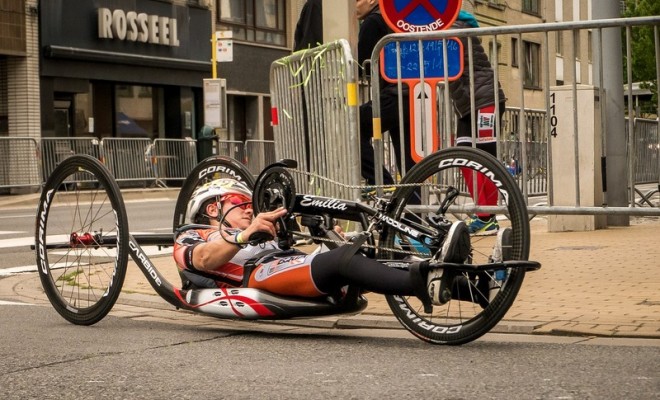
All Ability Cycling
Cycling is a fantastic way to get fit, and is perfect for both men and women. It has a growing supportive-community both on and offline, and maintains a steadfast philosophy of inclusion; with many people with physical disabilities and limitations opting to get involved in the sport.
While there’s a growing focus on disabled or inclusive sport in the UK and England, it can still be a bit daunting to find and modify a sport to include disabled athletes. If that’s a situation you find yourself, a family member, or friend in, consider cycling.
Cycling is a hugely popular activity in the UK: around two million people in the UK ride a bicycle at least once a week, and overall, the sport is growing dramatically, with some estimates putting the year-on-year growth of the sport as high as 30% in high-end bike sales.
What’s really fantastic about cycling is that it’s so easily adaptable to be an inclusive sport. Inclusion is as simple as changing the equipment to suit the needs of the rider, and you’re there. This makes it ideal at a social level – riders of all physical abilities can take part without having to adjust sport’s rules.
There’s a host of specialised equipment out there, so we’ve outlined the most common options for riders with a variety of physical needs.
Hand cycle
The hand cycle is probably the first thing which comes to mind when you think of an accessible bicycle, and for good reason. The hand cycle is an incredibly flexible design and only requires someone to be mobile enough to operate the crank to get the same experience as a traditional cyclist. Riders can choose from a dedicated bike in an upright or recumbent position, or opt for a convenient system which adapts a modern wheelchair into a hand-cycle powered tricycle.
Running bike
The running bike supports the body of the rider on the frame of a tricycle-styled cycle and is powered by the rider ‘running’ the bike. The stability and the lack of weight on the rider’s legs make it perfect for a rider with balance or lower limb strength problems, and it takes such comparatively little strength to operate some users of powered wheelchairs are able to use them with ease.
Tandem
Different from the more common configuration of having the riders behind one another, a more inclusive and accessible tandem has the riders seated side-by-side. By pooling their riding skills you have the option to chop and change who does what on the bicycle, and to what extent.
Amputee modifications
For riders missing just a single limb, there are options to introduce prosthesis mounts so a commercial bicycle can be operated normally.
If you’ve had a look over this list and you’re concerned the equipment mentioned doesn’t suit your individual needs, don’t fret. We can’t list every variation of accessible bicycle here, but we weren’t stretching the truth when we said cycling is intensely adaptable. Take a look at a company like Quest88 to see a broader range of all-ability cycling equipment.
If you want to share your experience with cycling, or recommend a particular riding event ideal for disabled riders, leave us a comment below!


You must be logged in to post a comment Login